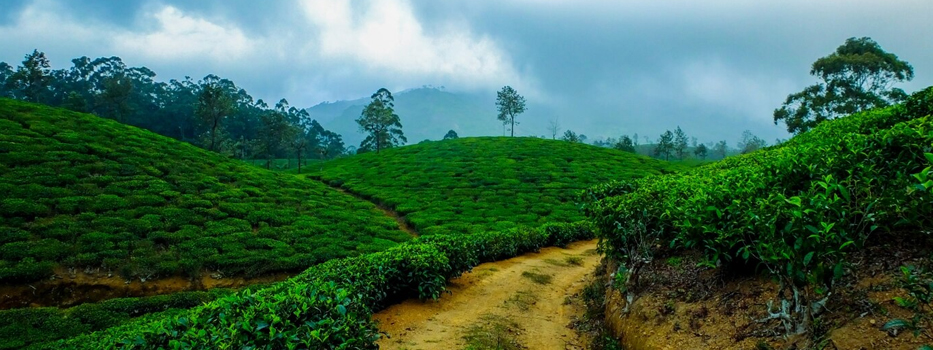It seems we can’t find what you’re looking for. Perhaps searching can help.
No Hill Station found in Lakshadweep.
About Lakshadweep
Lakshadweep, an archipelago located in the Arabian Sea off the southwestern coast of India, is a Union Territory renowned for its stunning coral atolls, crystal-clear waters, and unique marine biodiversity. Comprising 36 islands, Lakshadweep covers a total area of approximately 30 square kilometers, making it one of the smallest Union Territories in India. Its name, derived from the Sanskrit words “Laksha” (hundred thousand) and “dweep” (island), reflects the numerous islands in the group.
Geographical and Natural Features
Topography: Lakshadweep consists of coral atolls and coral reefs, with the majority of the land area being low-lying and flat. The islands are surrounded by turquoise lagoons and pristine white-sand beaches, making them a haven for marine life and a popular destination for tourists seeking natural beauty and tranquility.
Climate: The climate in Lakshadweep is tropical, characterized by high humidity and temperatures ranging from 25°C to 35°C throughout the year. The region experiences a monsoon season from June to September, bringing heavy rainfall and contributing to the lushness of the islands. The dry season from October to May is marked by sunny skies and relatively less humidity.
Marine Life: Lakshadweep is part of the Indian Ocean’s coral triangle, known for its rich marine biodiversity. The archipelago’s coral reefs are home to a diverse range of marine species, including vibrant coral species, sea turtles, rays, and various fish species. The clear waters and extensive coral reefs make Lakshadweep a popular destination for snorkeling and scuba diving.
Historical and Cultural Background
Colonial Era: The islands of Lakshadweep were under the control of various dynasties before becoming a part of British India. The Portuguese and the Dutch had limited influence in the region. The islands were mainly governed by local chieftains until they were annexed by the British in the 19th century.
Post-Independence: After India gained independence in 1947, Lakshadweep was constituted as a Union Territory. It was initially part of the larger territory of the Laccadive, Minicoy, and Amindivi Islands but was later renamed Lakshadweep in 1973. The region has since been known for its efforts in preserving its unique environmental and cultural heritage.
Economy and Development
Tourism: Tourism is the primary economic activity in Lakshadweep, attracting visitors with its natural beauty, serene environment, and water-based activities. The islands offer a range of experiences, including snorkeling, scuba diving, kayaking, and fishing. The primary tourist destinations include:
- Agatti Island: Known for its beautiful beaches and coral reefs, Agatti is the gateway to Lakshadweep and offers excellent opportunities for water sports and relaxation.
- Bangaram Atoll: A popular destination for its pristine beaches and clear blue waters, Bangaram is ideal for tourists seeking a tranquil escape from city life.
- Kavaratti: The administrative capital of Lakshadweep, Kavaratti is known for its cultural heritage and water-based activities, including dolphin watching and kayaking.
Fishing: Fishing is an essential occupation for the local population. The waters around Lakshadweep are rich in marine resources, and traditional fishing methods are practiced alongside commercial fishing. The fishing industry supports both subsistence and export activities.
Agriculture: Agriculture in Lakshadweep is limited due to the small land area and saline soil. However, coconut cultivation is prominent, and copra (dried coconut meat) is an essential product. Other crops include vegetables and fruits grown in limited quantities.
Culture and Lifestyle
Traditional Culture: The culture of Lakshadweep is influenced by a blend of indigenous traditions and Islamic practices, as the majority of the population is Muslim. The cultural practices include traditional dance forms, music, and festivals that reflect the region’s maritime heritage.
Festivals: Major festivals celebrated in Lakshadweep include Eid-ul-Fitr, Eid-ul-Adha, and Muharram. These festivals are marked by communal prayers, feasts, and cultural performances. Local festivals and cultural events showcase traditional music, dance, and cuisine, reflecting the rich heritage of the islands.
Cuisine: Lakshadweep’s cuisine is predominantly seafood-based, with dishes featuring fish, coconut, and spices. Popular dishes include Masala Fish, Pulao, and Coconut Curry. The use of fresh seafood and local spices creates a unique and flavorful culinary experience.
Transportation and Connectivity
Air Travel: The primary gateway to Lakshadweep is the Agatti Airport, which offers domestic flights from Kochi, Kerala. The airport is the main entry point for tourists and supplies to the islands. Regular flights connect Lakshadweep to mainland India, facilitating travel for residents and visitors.
Sea Travel: Passenger and cargo ships operate between the mainland and Lakshadweep. The shipping services connect major ports in Kerala, such as Kochi and Calicut, to various islands in the archipelago. The sea routes provide essential connectivity for trade and tourism.
Challenges and Conservation Efforts
Environmental Conservation: Lakshadweep faces challenges related to environmental conservation, including coral reef degradation and the impacts of climate change. The local government and environmental organizations are working to protect the fragile ecosystems through conservation programs and sustainable tourism practices.
Sustainable Development: Efforts are being made to balance tourism development with environmental sustainability. Initiatives include regulating tourist activities, protecting marine biodiversity, and promoting eco-friendly practices.
Conclusion
Lakshadweep is a unique and enchanting destination known for its pristine natural beauty, vibrant marine life, and rich cultural heritage. The archipelago’s coral atolls, clear waters, and serene environment offer a haven for tourists and nature enthusiasts. As the region continues to develop, maintaining a balance between tourism and conservation will be crucial in preserving its ecological and cultural treasures for future generations.
States
- Andaman and Nicobar
- Andhra Pradesh
- Arunachal Pradesh
- Assam
- Bihar
- Chandigarh
- Chhatisgarh
- Dadar & Nagar
- Daman & Diu
- Delhi
- Goa
- Gujarat
- Haryana
- Himachal Pradesh
- jammu & Kashmir
- Jharkhand
- Karnataka
- Kerala
- Lakshadweep
- Madhya Pradesh
- Maharashtra
- Manipur
- Meghalaya
- Mizoram
- Nagaland
- Orissa
- Pondicherry
- Punjab
- Rajasthan
- Sikkim
- Tamil Nadu
- Tripura
- Uttar Pradesh
- Uttarakhand
- Uttaranchal
- West Bengal

